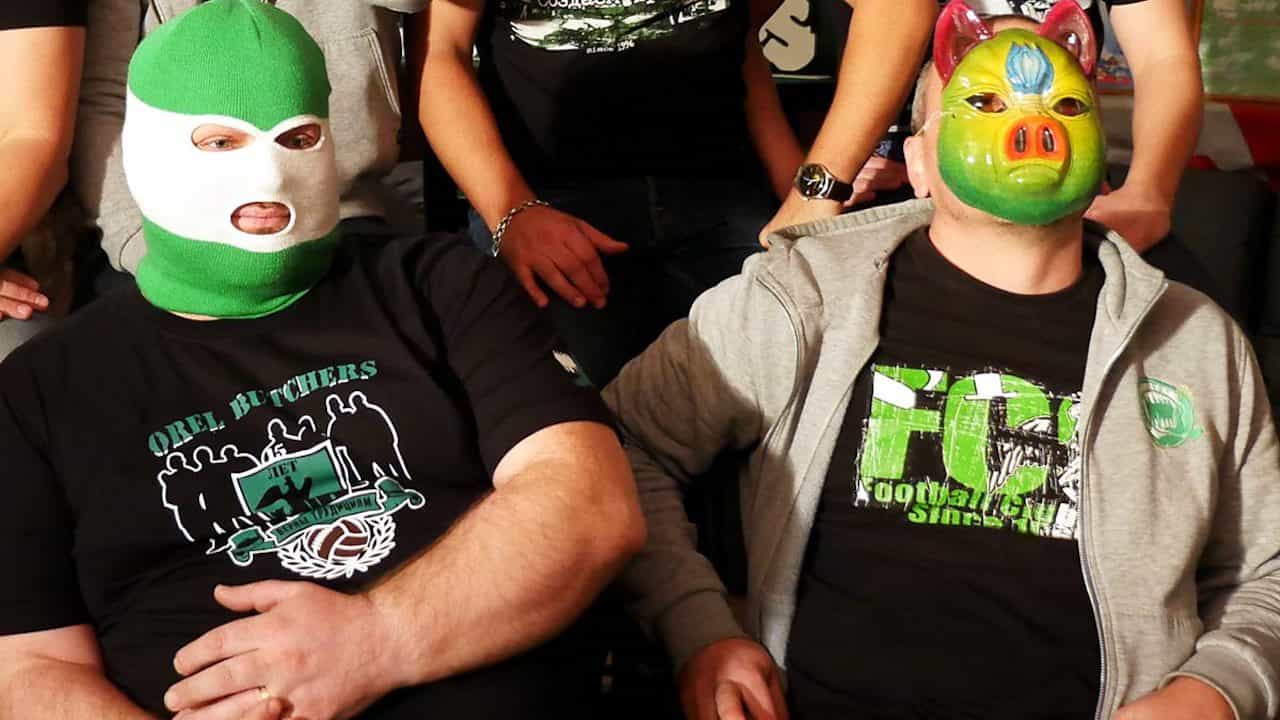Russia’s Hooligan Army
Russia’s Hooligan Army provides an inside look at the violent subculture of Russian football hooliganism. Directed by Alex Stockley von Statzer, it offers a stark and unsettling glimpse into the world of organized football violence in Russia, just ahead of the country’s hosting of the 2018 FIFA World Cup.
The documentary takes viewers on a journey through Russia’s hooligan culture, revealing a world where brutal violence is not only accepted but celebrated as a mark of honor and a symbol of resurgent Russian masculinity. It features rare interviews with members of some of the most feared “firms” in Russia, including the Spartak Gladiators and Orel Butchers, providing unprecedented access to a typically secretive and closed-off community.
One of the most striking aspects is its portrayal of the 2016 European Championships in Marseille, where violent clashes between Russian and English supporters brought Russian hooliganism into the international spotlight. It includes footage from these clashes, where over 100 English supporters were injured, with two beaten into comas. This incident raised serious concerns about safety at the upcoming World Cup and serves as a starting point for its deeper investigation.
The film paints a picture of a hooligan culture that has evolved beyond mere drunken brawls. Instead, it reveals a more organized and disciplined approach to violence. Many of the hooligans interviewed pride themselves on their physical fitness and combat training, viewing their activities as a form of sport rather than mindless aggression. This shift is exemplified by one hooligan’s statement that they’ve moved away from vodka binges, deriving their identity from violence instead.
Russia’s Hooligan Army also captures the nationalistic and masculine ideologies underpinning this subculture. Many of the hooligans express disdain for what they perceive as the softness of Western culture, particularly targeting English fans whom they once revered as the originators of football hooliganism. This sentiment is encapsulated by one hooligan’s remark that Western culture is declining “deep into the garbage bin”.
Perhaps most disturbing is the documentary’s footage of organized fights in remote forest locations, where young men audition to join established hooligan “firms”. These scenes provide a raw and unfiltered look at the violence these groups engage in, highlighting the serious nature of this subculture and its potential impact on the safety of visiting fans during major football events.
While the film finds no direct evidence of state sponsorship of these hooligan groups, it does raise questions about the broader cultural and political context in which this violence thrives.









